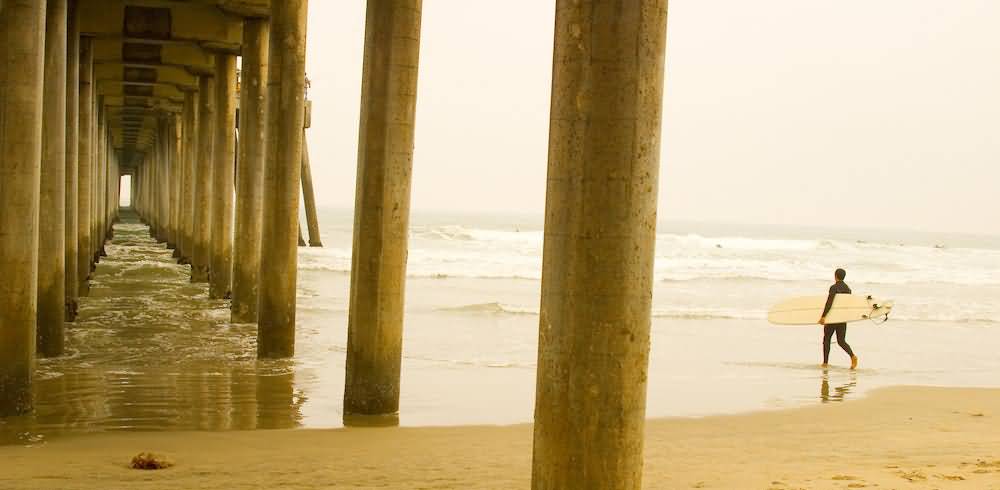Holiday Gift Guide - Clothing & Gear Up to 75% Off! SHOP NOW


Not as in “don’t surf into them,” but as in “don’t go surfing near them in the first place”. Piers, exposed rocks, groynes, cliffs, boats — when good waves are breaking in close vicinity to such obstacles, you should probably think about finding somewhere else to surf.
Around permanent structures, be they natural or manmade, currents are often much stronger, which further complicates matters; pay particular attention to longshore currents, which can rapidly transport you away from where you first paddle out and towards danger.
Why are longshore currents dangerous?
Long-shore currents can sweep swimmers and surfers into rip currents, piers, jetties, and other hazardous areas. In many cases, the long-shore current is strong enough to prevent swimmers from being able to keep their feet on the bottom, making it difficult to return to shore.
Always check with the lifeguard on-duty before you enter the ocean to consider the direction and strength of the long-shore current and the possible hazards you may be swept into.
Source: mpora.com
Source: malibumakos.com
Reigning MotoGP champion Marc Marquez and Honda have the most to gain from the coronavi...
The decision was made during a meeting of the Council of Ministers, chaired by Chief Mi...
What does it take to be the world's fastest motorcycle? Two Suzuki Hyabusa engines and ...
*Your wish list is temporary to this session and not permanently saved

